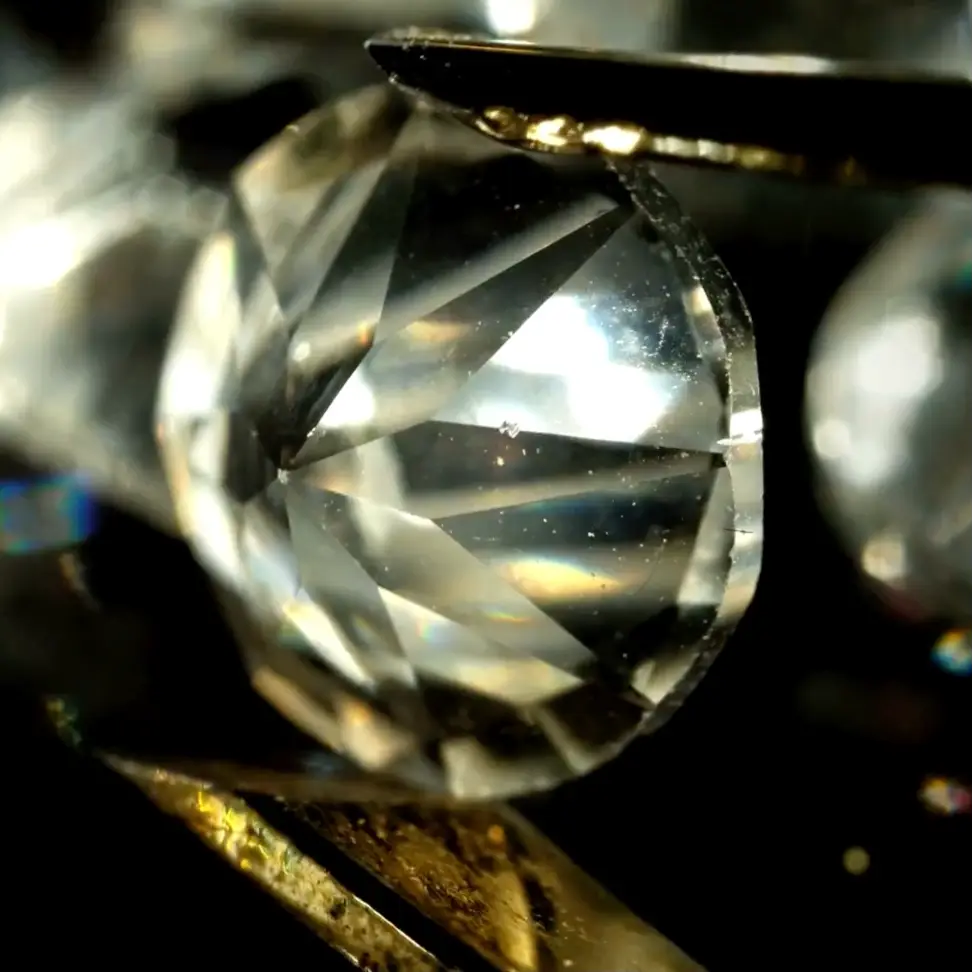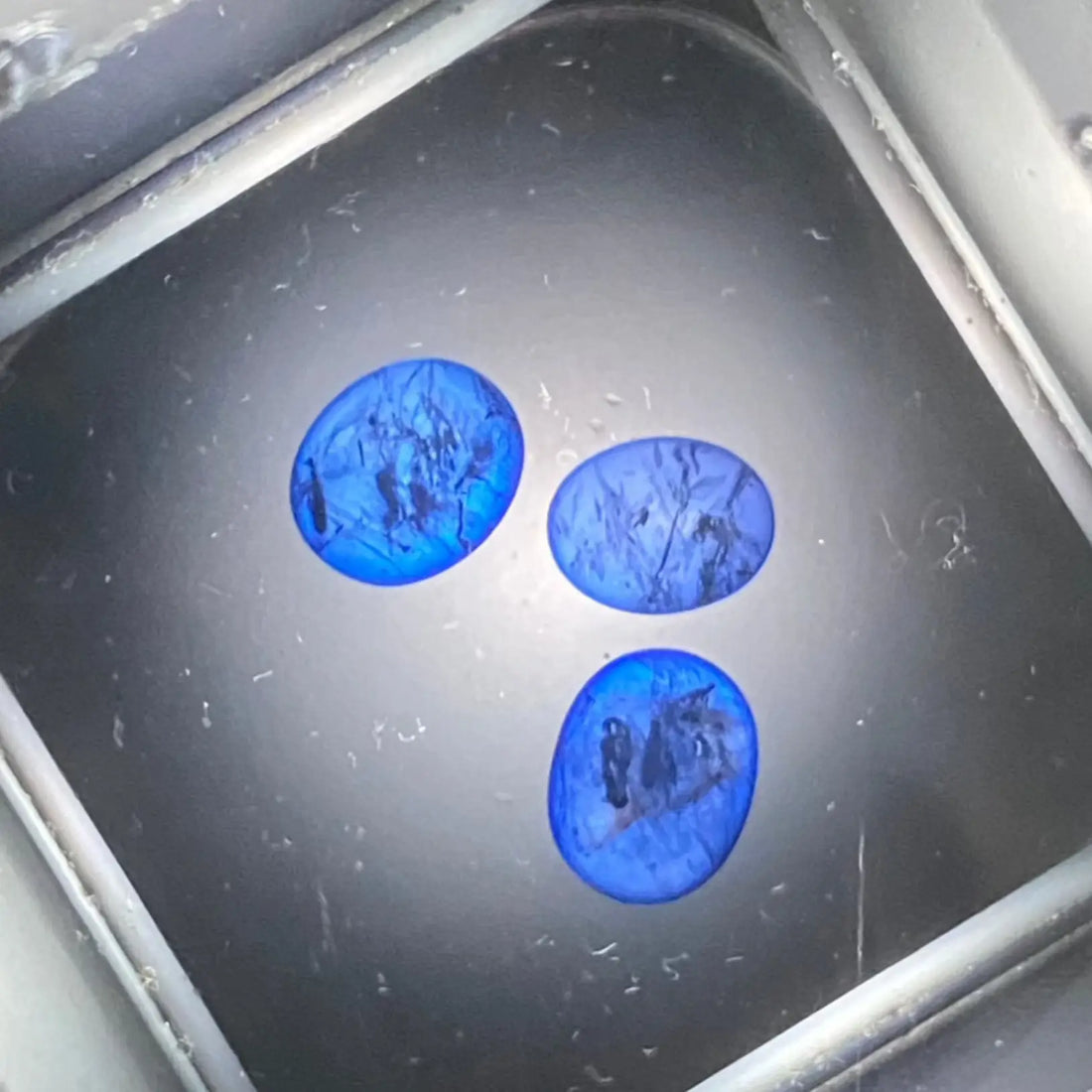news
Diamonds and gemstones certification expertise
Die Welt der Edelsteine erfordert fundierte zertifizierung. Expertise ist von entscheidender bedeutung, da Zertifikate von Instituten wie GIA die Qualität garantieren.
Learn moreGemstone evaluation and visual appeal
Edelsteine üben eine außergewöhnliche Faszination aus. Ihre Herkunft, geprägt durch geologische Bedingungen, bestimmt Wert und Aussehen. Seltenheit und Fundort machen sie begehrt.
Learn moreUnderstanding gemstone grading
Die Bewertung von Edelsteinen ist ein komplexer prozess faktoren. Gewicht und Abmessungen sind entscheidende eigenschaften, die den Wert beeinflussen. Auch der Schliff ist wichtig.
Learn moreGemstone treatments for improved quality
Dieser Blogbeitrag stellt die gängigsten Behandlungen vorgestellt, die wertvolle Steine und Diamanten durchlaufen, um Aussehen und Haltbarkeit zu verbessern. Dies beeinflusst Qualität und Wert, wie vom Gemological Institute erläutert.
Learn moreInclusion of gemstones: significance for quality and value
Einschlüsse, kleine unregelmäßigkeiten in einem edlen Steins, spielen eine entscheidende Rolle bei der Bestimmung von Qualität, Wert und Echtheit von Edelsteinen und Diamanten. Der Artikel untersucht diese Merkmale und ihre Bedeutung.
Learn moreSmart investments in uncertain times
An intelligent investment strategy: In a time when economic conditions are characterized by uncertainty and traditional investments like stocks and bonds are subject to strong fluctuations, more and more investors are looking for alternative ways to protect their purchasing power. One of these options is precious stones and jewelry. But why are precious stones not just a matter of aesthetic pleasure, but also a wise investment? In this blog post, we explore the benefits of protecting purchasing power with precious stones. Stability of precious stones Gemstones and jewelry have proven themselves as stable assets over centuries. Unlike paper currencies, which can be devalued by inflation, high-quality gemstones often retain their value or even increase over time. Exclusive materials such as diamonds, rubies, sapphires, and emeralds are rare, and their demand is increasing, supporting their long-term value. Inflation protection One of the biggest challenges for investors in uncertain times is inflation. When the purchasing power of money declines, interest in tangible assets increases. Gemstones can offer a sensible hedge here, as their value generally remains stable regardless of financial market fluctuations. They thus offer effective protection against inflation-related loss of value. Global demand and diversification Demand for high-quality gemstones is high worldwide and is driven by various factors, including rising wealth in emerging markets and the ongoing trend toward sustainable luxury. This global demand creates a solid foundation for price development. By investing in gemstones, investors diversify their portfolios, reducing risk and enabling potentially high returns. Aesthetic and emotional value Gemstones offer not only financial value but also aesthetic and emotional appeal. This means that investors aren't just investing in an asset, but also in objects that bring joy and are often tied to personal stories. This emotional connection can be beneficial in the sales process when the time comes to liquidate the investment. Important considerations before purchasing Certification: Make sure the gemstone is certified by a recognized gemological institute. This ensures that you are purchasing a high-quality item. Expertise: Consider seeking expert advice or building your own expertise to make informed decisions. Market research: Before investing, learn about current market developments to identify the best times to buy and sell. In summary, gemstones offer an attractive way to protect your purchasing power and are a valuable addition to a diversified portfolio. By investing in these timeless treasures, you can not only protect your wealth but also benefit from potential appreciation. In a world of increasing financial uncertainty, it's wise to find creative and sustainable solutions to protect your purchasing power—and precious stones could be just the answer you're looking for.
Learn morePrecious stone and diamond certification explained
Die Zertifizierung von Edelsteinen und Diamanten ist ein streng regulierter Prozess, der hohe Anforderungen an Qualität und Transparenz stellt. Dank Organisationen wie CIBJO wird sichergestellt, dass die Industrie verantwortungsbewusst und nach höchsten Standards arbeitet.
Learn moreColorless diamonds features and properties
The color of colorless diamonds Colorless diamonds, the most common, are composed of pure carbon and have a crystalline structure that refracts light in a unique way. These diamonds are graded according to their color grade, ranging from D (colorless) to Z (some or many shades). The color of diamonds is influenced by the absorption of light of different wavelengths. Colorless diamonds contain no impurities that would absorb or affect light, which is why they appear absolutely clear. A diamond's many facets reflect light in different colors, giving the stone its shimmering luster. Fancy Diamonds: A Palette of Colors Fancy diamonds differ from colorless diamonds in their intense colors, ranging from yellow, blue, red, green, and even violet. The color of these diamonds is also created by the absorption of light, but in this case, additional elements or structures in the crystal lattice are responsible. For example, nitrogen, which becomes trapped in diamonds during crystallization, can impart a yellow or brown hue. Boron, on the other hand, can impart a blue hue to a diamond structure. The intensity and purity of the color are assessed using a scale that takes into account both hue (the primary color) and saturation (the intensity of the color). These colors are not only aesthetically pleasing, but also rare and therefore often very valuable. The price of a fancy diamond can increase significantly the rarer the color and the more intense the saturation. The formation of colors in gemstones Gemstones such as rubies, sapphires, and emeralds also exhibit a variety of colors, created by different chemical elements and minerals. For example, the red color of rubies is caused by the presence of chromium, while the deep blue color of sapphires is caused by iron and titanium. Gemstones can also exhibit considerable color variation due to natural processes such as temperature and pressure during their formation. These factors can influence the arrangement of atoms within the crystals, resulting in different light absorption properties. Another important aspect is the clarity and purity of the gemstones. The fewer inclusions and impurities there are, the more intense and radiant the color appears. Some gemstones also exhibit the phenomenon of "pleochroism," in which they display different colors depending on the viewing angle. This is particularly pronounced in materials such as tourmaline and alexandrite. In summary, it can be said that... ...the colors of gemstones and diamonds are the result of fascinating chemical and physical processes. While colorless diamonds are valued for their clarity and brilliance, fancy diamonds fascinate with their vibrant and varied colors, which are influenced by various chemical elements. Gemstones offer a similar variety, with colors often influenced by specific minerals and the stone's purity. Understanding these processes helps us not only appreciate the beauty of these stones, but also the factors that determine their value. This allows you to make informed decisions when purchasing gemstones and diamonds, appreciating the unique qualities of each piece.
Learn moreLabor-reared diamonds Ethical and Valuable?
The challenge of definition The trend toward marketing lab-grown diamonds as ethical alternatives raises some questions about transparency and actual value. Some suppliers use marketing strategies that suggest exclusivity and rarity, while the reality is often quite different. This leads to confusion and misinformation among consumers and within the industry. Market confusion and consumer awareness. One of the biggest challenges facing the jewelry industry is that many consumers are not adequately informed about the differences between natural and lab-grown diamonds. This leads to the potential devaluation of naturally mined stones, which often come with significant social and environmental costs. Misleading marketing messages reinforce the notion that lab-grown diamonds are the only ethical choice, which is concerning. Customers should be aware that the use of the term "ethical" alone is not enough to make an informed purchasing decision. The responsibility lies with all of us to provide clear and concise information to raise awareness of the differences and ensure consumers can make informed choices. Quality standards and certification The quality of lab-grown diamonds should also not be overlooked. While some manufacturers set high standards for their products, there are also offerings on the market that offer inferior stones with little to no transparency regarding their origin or manufacturing processes. Therefore, it is crucial that industry members rely on established certification bodies to ensure the quality and ethics of the materials used.
Learn moreVictorian Society: An Overview
During the heyday of the Victorian era (mid-19th to early 20th centuries), an era characterized by strict social norms and a deep sense of decorum, one profession stood out in particular: the jewelers. These artisans and traders were known not only for their exquisite jewelry, but also, paradoxically, for their influence on fashion trends, which often carried a touch of scandal. The job description of a jeweler during this period encompassed far more than mere craftsmanship. Even then, outstanding skill in handling precious metals and stones wasn't enough; they also required a keen sense of aesthetics and fashion. The trend of the time was nipple piercings, the so-called "Anneux de Seins." This form of body jewelry represented an unusual contrast to the otherwise conservative fashion and etiquette of the time. They became a symbol of individuality and a rebellion against the strict conventions that characterized Victorian life and clothing. A fascinating connection between the dazzling world of jewelry and body modification dates back to Isabeau de Bavière, who is often credited as the first woman to boldly pierce her nipples. In the late 14th and early 15th centuries, this practice not only made a bold statement of personal freedom, but also supposedly sparked a trend among wealthy women of her time that quickly spread to other European royal families. Known as "ornate apples," nipple piercings adorned with sparkling diamonds and magnificent gold chains are an early example of how body art was entering the spheres of luxury and social status. Yet despite her daring style, Isabeau was not without controversy; her extreme promiscuity earned her much criticism in an often prudish society. But the glamour of this new trend also brought with it a dark side. At a time when medical knowledge was still rudimentary and antibiotics remained unknown, doctors warned of the risks associated with such body modifications. Inflammation and infection were common companions to these fashion trends, and although jewelers encouraged the liberation of personal style expression, many found themselves in a moral dilemma. Still, the question remains why women in some Western European cities in the 1840s were "almost expected to have their nipples pierced." Victorian jewelers were not only artisans but also cultural intermediaries who played a key role in this dynamic world of fashion and body art. Their ability to identify and promote contemporary trends made them influential figures whose legacy continues to resonate today.
Learn moreUnfinished diamonds reveal Earth's history
An international research team from the Hebrew University of Jerusalem has gained fascinating insights into Earth's history by studying unfinished diamonds. These special stones, often rejected by the trade as unsightly, contain valuable information about their origins dating back 2.6 billion years. The scientists analyzed dull, yellowish diamonds from South Africa that still contain liquid inclusions. These substances provide information about the conditions deep inside the Earth when the diamonds were formed. In the enclosed liquids, they found uranium and thorium, which decay into the helium-4 isotope. By calculating the decay rate of helium, the researchers were able to determine the age of the diamonds they examined and date them to several geological periods. In principle, the research basis is the same as that used in archaeology, where, for example, the decay of carbon is used to determine age. The following results emerged from the research: The oldest specimens formed between 750 million and 2.6 billion years ago, during significant tectonic activity in South Africa (formation of the first multicellular organisms and the breakup of supercontinents such as Rodinia). The middle diamonds date from a period 300 to 540 million years ago, contemporaneous with the growth of the Naukluft Mountains in Namibia (the origin of the first plants and forests on land, as well as arthropods and mammals). The youngest diamonds formed 85 to 118 million years ago, shortly before they reached the surface through subterranean eruptions. (Habitat of dinosaurs and pterosaurs - in the Jurassic and Cretaceous periods) Analysis of the fluids revealed different chemical compositions depending on the time of formation, indicating specific geological events. These findings make diamonds unique "time capsules" that provide valuable insights into Earth's geological evolution.
Learn more














